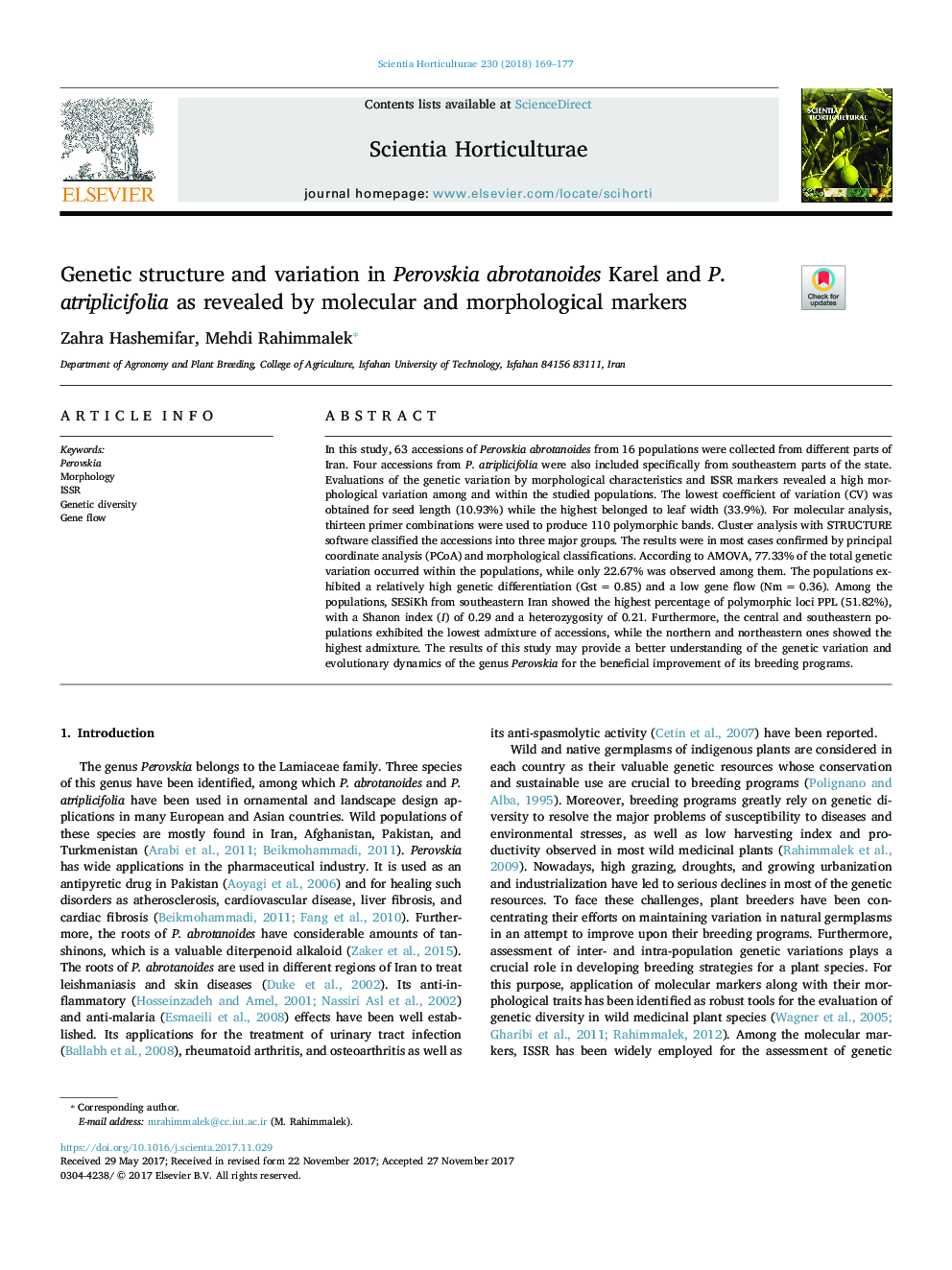| Article ID | Journal | Published Year | Pages | File Type |
|---|---|---|---|---|
| 8893076 | Scientia Horticulturae | 2018 | 9 Pages |
Abstract
In this study, 63 accessions of Perovskia abrotanoides from 16 populations were collected from different parts of Iran. Four accessions from P. atriplicifolia were also included specifically from southeastern parts of the state. Evaluations of the genetic variation by morphological characteristics and ISSR markers revealed a high morphological variation among and within the studied populations. The lowest coefficient of variation (CV) was obtained for seed length (10.93%) while the highest belonged to leaf width (33.9%). For molecular analysis, thirteen primer combinations were used to produce 110 polymorphic bands. Cluster analysis with STRUCTURE software classified the accessions into three major groups. The results were in most cases confirmed by principal coordinate analysis (PCoA) and morphological classifications. According to AMOVA, 77.33% of the total genetic variation occurred within the populations, while only 22.67% was observed among them. The populations exhibited a relatively high genetic differentiation (Gst = 0.85) and a low gene flow (Nm = 0.36). Among the populations, SESiKh from southeastern Iran showed the highest percentage of polymorphic loci PPL (51.82%), with a Shanon index (I) of 0.29 and a heterozygosity of 0.21. Furthermore, the central and southeastern populations exhibited the lowest admixture of accessions, while the northern and northeastern ones showed the highest admixture. The results of this study may provide a better understanding of the genetic variation and evolutionary dynamics of the genus Perovskia for the beneficial improvement of its breeding programs.
Related Topics
Life Sciences
Agricultural and Biological Sciences
Horticulture
Authors
Zahra Hashemifar, Mehdi Rahimmalek,
